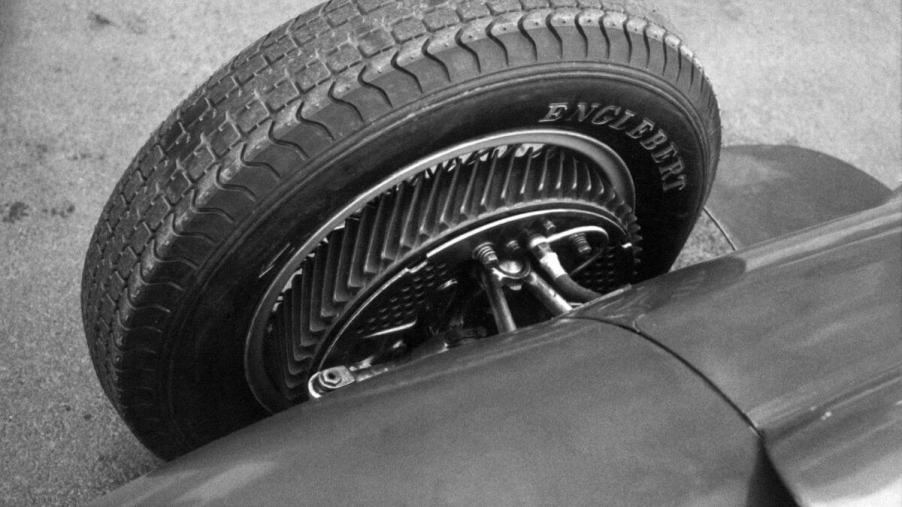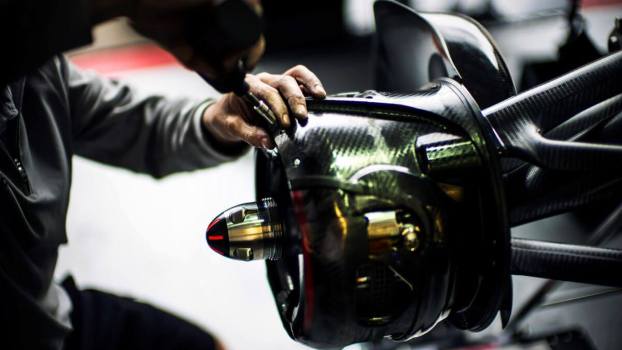
What’s the Difference Between Disc Brakes and Drum Brakes?
A braking system is central to a vehicle’s performance. Whether pulling up to a stoplight or scrubbing speed on the track, brakes modulate speed and enhance control. Not only that, but they’re vital to safety, helping you avoid vehicles and obstacles.
On modern cars, there are two types of brake configurations: disc and drum. Each has particular pros and cons and specific methods of upkeep. So, what’s the difference, and is one better than the other? Let’s explore disc brakes vs. drum brakes.
Disc brakes: Design and function
Disc brakes use clamping force, converting kinetic energy into heat, to slow or stop your car. As How Stuff Works describes, their function is relatively simple. According to Les Schwab, a disc brake has three components: the rotor, pads, and caliper.
Rotors are typically cast iron with a smooth surface on both sides. They’re attached to the hub, and you can see them through the wheel spokes. For performance applications, vented disc brakes use inner vanes to dissipate heat. Additionally, some cars use carbon composite discs for lighter weight and decreased fade.
Brake pads have an abrasive surface designed to bite into the rotor, converting the car’s kinetic energy into heat. In the same way that sandpaper scrapes into wood, a brake pad creates friction with a disc.
Calipers are like a vice grip clamping into the rotors. When you press the brake pedal, hydraulic fluid transmits the force to the calipers, which grab the discs.
Drum brakes: Design and function
Drum brakes use a fundamentally different method to slow a vehicle. Inside a rotating drum, brake shoes press outward, create friction, and bring a car to a stop. Drum brakes usually see use on the rear axle or on trailers. As How Stuff Works Explains, the main parts of a drum brake are the drum, the shoes, and the piston.
The drum is a hollow cylinder that rotates with the wheel. Its inside provides a surface for the shoes to press into.
Brake shoes reside inside the drum and conform to the drum’s shape. During braking, the shoes push into the drum, creating friction and heat.
Lastly, a drum brake’s piston relays a driver’s inputs during braking. When someone presses the brake pedal, the hydraulic fluid causes the piston to push the shoes against the drum.
Disc brakes vs. drum brakes: Pros and cons
Look at any high-performance car—like a Porsche 911 or Chevrolet Corvette—and you’ll see rotors hiding behind its alloy wheels. Clearly, disc brakes are the pick for stopping power in demanding conditions. On the other hand, drum brakes are simple and cheap. For a trailer or an economy car, drum brakes make sense.
However, discs and drums have many similarities when it’s time for service. Both systems require the inspection of brake lines, seals, and hoses, along with fluid replacement. That ensures proper transmission of pedal force. Also similar is the master cylinder, which is vital to strong braking, according to Firestone Complete Auto Care. When it becomes worn out, drivers might notice a soft pedal and longer stops. Additionally, brake pads and shoes become worn with time. That’s only natural since they’re subject to repeated friction and heat.
Regarding maintenance, the most significant contrast is that disc braking systems need periodic rotor replacement or resurfacing for optimal performance. When replacing brake pads, it’s a good idea to add new rotors too.
Disc brakes are the standard for stopping performance, no matter the conditions. Drum brakes are a simple solution when the cost is the deciding factor. However, with braking so vital to safety and dynamics, discs are the better pick. While drums may be cheaper in parts expenses, the decreased performance isn’t worth the savings. Besides that, monoblock calipers just look cool, adding racy style to the street. Disc braking systems just work.




